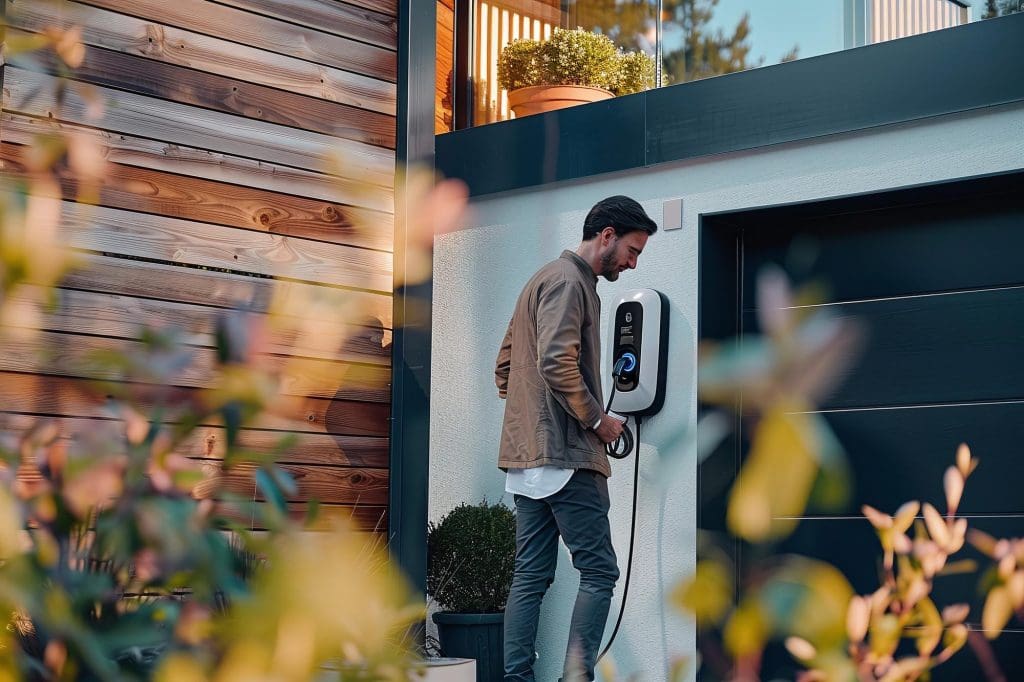Home EV Charger UK: Installation, Costs & Grants (2025)
If you’re buying an electric car, installing a home charging point is the single best thing you can do. It’s the key that unlocks the two biggest benefits of EV ownership: incredible convenience and dramatically lower running costs. Waking up to a “full tank” every morning for less than a tenner changes everything.
But what’s involved? How much does it cost, and can you get any money off?
This is your complete 2025 guide to getting a home EV charger installed in the UK and Ireland, breaking down the process, the costs, and the vital grants available.
First, Why Do I Need a Dedicated Charger?
While most EVs come with a cable that can plug into a standard 3-pin wall socket (a “granny charger”), this is not a long-term solution.
Speed
A 3-pin socket delivers power at around 2.3 kW, which can take over 24 hours to charge a typical EV. A dedicated 7.4 kW home charger is over three times faster, charging most cars overnight with ease.
Safety
Home chargers are designed for sustained, high-power delivery. They are professionally installed on their own dedicated circuit, making them much safer and more robust than a standard domestic socket.
The Big Question: How Much Does It Cost?
The total cost is split into two parts: the charger unit itself and the installation. For 2025, you should budget between £850 and £1,200 for a fully installed, quality smart charger.
The Charger Unit (£500 – £800)
The price depends on the brand and features. A basic “smart” charger will be at the lower end, while a unit with premium features like solar integration will be at the higher end.
A “Standard” Installation (£350 – £500)
This price covers the labour and materials for a straightforward installation. This typically includes fitting the unit to an exterior wall and running up to 10 metres of cable back to your consumer unit (fuse box).
What could cost extra? If your fuse box is very old, on the other side of the house, or you need groundworks to run a cable, the installation cost could be higher. Always get a firm quote from your installer first.
Saving Money: UK & Irish Charger Grants (2025)
This is the best way to reduce the upfront cost. Both the UK and Irish governments offer grants to help with installation.
The UK: EV Chargepoint Grant
The UK government’s focus is on helping those who can’t easily install a charger. This grant is specifically for tenants and landlords.
- What you get: £350 towards the cost of the charger and installation.
- Who is eligible? Tenants and landlords, including flat owners with dedicated off-street parking.
- How to claim: Your OZEV-approved installer handles the application and deducts the £350 from your final invoice.
Ireland: SEAI Home Charger Grant
The Sustainable Energy Authority of Ireland (SEAI) offers a grant to all EV owners to help with charger installation.
- What you get: Up to €300 towards the cost of purchasing and installing a home charger.
- Who is eligible? Any private owner of a new or second-hand EV. You can even apply before your car arrives.
- How to apply: Have your charger installed, then complete the SEAI online application with installer details and proof of purchase.
Choosing the Right Charger for You
Not all chargers are created equal. Here are the key features to consider when picking yours.
Charging Speed (7.4 kW is the Sweet Spot)
Most UK and Irish homes have a single-phase electricity supply, supporting up to 7.4 kW — more than enough to charge any EV overnight. Three-phase properties can support 22 kW chargers, but this is rare for domestic use.
Tethered vs Untethered
- Tethered: Cable permanently attached. Pro: Convenient. Con: Always visible.
- Untethered: Socket-only; use your own cable. Pro: Neater. Con: Slightly less convenient.
“Smart” Features (Essential!)
A smart charger connects to the internet — and since 2022, all UK-sold units must be smart. Smart functionality lets you:
- Schedule Charging: Automatically charge overnight during cheaper off-peak hours.
- Integrate with EV Energy Tariffs: Work with tariffs such as Octopus Intelligent Go or OVO Charge Anytime to charge when energy is cheapest or greenest.
- Monitor Usage: Track consumption via an app.
- Solar Integration: Models such as the Myenergi Zappi can channel surplus solar energy into your car.
The Installation Process: A Simple 4-Step Guide
-
Get Started with Easee: Whether you live in a flat or have your own driveway, the Easee One charger is built for almost any home setup. Its compact, Scandinavian design, solar readiness, and app integration make home charging effortless. Installation is typically completed within 7–10 working days at an all-in price from £999, including standard installation.
Backed by ONEEV’s partnership with Easee — one of Europe’s most trusted EV charger brands with over 850,000 units installed — your installation and support are seamless and future-ready.
- Get a Quote: Complete your quick online survey and submit a few photos of your fuse box, electricity meter, and desired charger location.
- Installation Day: A certified electrician will fit your Easee charger, run the cable, and connect it safely to your home’s power system. A standard installation takes around 2–4 hours.
- Demonstration: Your installer will test the charger, link it to the Easee app, and walk you through how to monitor and schedule your charging.
Final Pro Tip: Switch Your Energy Tariff
Installing a home charger is only half the battle. To unlock full savings, switch to an EV-friendly tariff. These offer overnight rates of just 7p–10p per kWh versus the standard 25p–30p. That can slash your “fuel” costs by more than 70%.
